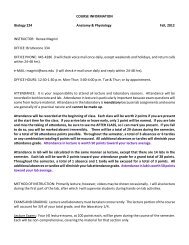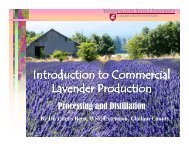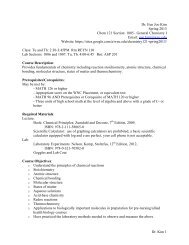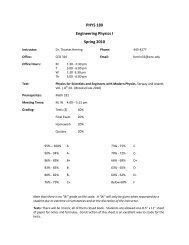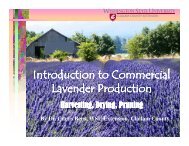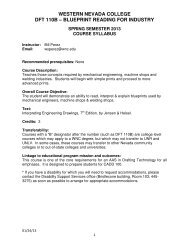Specialty Cut Flower Production and Marketing - UC Agriculture and ...
Specialty Cut Flower Production and Marketing - UC Agriculture and ...
Specialty Cut Flower Production and Marketing - UC Agriculture and ...
Create successful ePaper yourself
Turn your PDF publications into a flip-book with our unique Google optimized e-Paper software.
to remove air bubbles <strong>and</strong> bacteria.Some suppliers offer speciallydesigned tools for this task.See Further Resources. (Somerecent literature states that recuttingunderwater is unnecessary.)• Harvest during the coolest part ofthe day, early morning or late evening,<strong>and</strong> keep buckets of fl owersout of the sun.• Use warm, 100 to 110°F water inthe buckets. It is taken up morequickly than cool water.• Let fl owers st<strong>and</strong> at room temperaturein a hydrating solution for oneto two hours.• Store in a cooler. Low temperaturesprolong quality <strong>and</strong> vase life. Thebest temperature for keeping mostcut fl owers is 32 to 38°F with 80to 90 percent humidity. (Tropicalcuts are injured at such low temperatures<strong>and</strong> should be kept at55°F or room temperature. Zinniasalso need to be kept at highertemperatures; 40 to 45°F is recommended.)Packing Shed <strong>and</strong> Cold StorageA packing shed is an essential part of anyfl ower farm. A well-designed packing shedwill save time <strong>and</strong> help you maintain highquality. Depending on the size of the farm,it may be as rudimentary as a laundry tubor table under a canopy, or as sophisticatedas a separate building with automatedequipment <strong>and</strong> a loading dock. Growing forMarket publisher Lynn Byczynski surveyedother growers to learn what they liked ordidn’t like about their packing sheds. Featuresgrowers consider important in creatingthe ideal packing shed are listed in herarticle Plan the perfect packing shed. (Byczynski,2002)• Location. The packing shed shouldbe close to the fi elds so harvestedproduce can be moved quickly tothe postharvest area. It should alsobe accessible by whatever vehicle isgoing to transport the produce offthe farm.• Space. How much space you needdepends on what you grow <strong>and</strong>what other storage buildings areavailable to you. At a minimum,you need sinks for washing buckets<strong>and</strong> vases, tables for sorting<strong>and</strong> arranging, <strong>and</strong> a cooler. Youwill want a place to store buckets,vases, <strong>and</strong> other supplies. Work stationsshould be close enough thatsteps aren’t wasted going back <strong>and</strong>forth, but they should allow plentyof room for two or more people towork together.• Light. Good lighting is importantbecause it allows you to spot defectsin your flowers. From a mentalhealth perspective, try to get asmuch daylight as possible into yourpacking shed.• Surfaces. The best fl ooring is concretebecause it allows you to usewheeled carts, h<strong>and</strong> trucks, or evena pallet jack to move boxes or buckets.Concrete should be poured sothat it slopes toward a 6-inch drainfor easy washing of the fl oor. Wallscan be washable, too, if paintedwith epoxy paint.• Cleanliness. Sanitation is especiallyimportant in produce packingsheds, to prevent food-borne illness.In fl ower packing sheds, youcan protect packaging from mice<strong>and</strong> other pests by keeping suppliesin sealed storage containers.• Water. Plan for drainage that willh<strong>and</strong>le a large amount of water.The water you use in the packingshed will be too much for your septicsystem. Consider running it offto a garden area where it can beused to water plants.• Ergonomics. Workstation heightsshould suit the workers. Accordingto the Healthy Farmers, HealthyProfi ts Project at the University ofWisconsin, the most effi cient workwww.attra.ncat.orgATTRAPage 19



